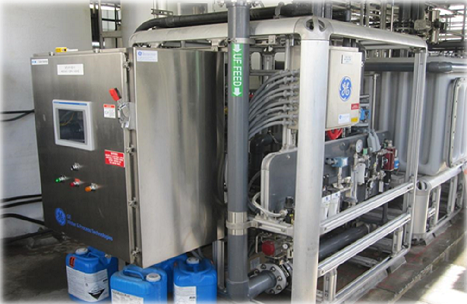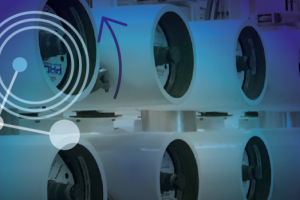Diane Gatza, Frank Fuchs, Marc Serna – West Basin Municipal Water District
Silvana Ghiu, Gerry Filteau – SPI
West Basin Municipal Water District has embarked on a water reliability program to reduce dependence on less reliable imported water to coastal LA from 66% down to 33% by the year 2020. As part of this program, the District is developing an ocean water desalination component as a drought-proof source of local water. The District has pilot tested various treatment technologies from 2002 to 2009 at the El Segundo Generating Station in El Segundo, CA, followed by larger scale Ocean Water Desalination Demonstration Facility (OWDDF). The OWDDF, the subject of this paper, operated 2010-2013 on an open intake pacific ocean in Redondo Beach CA.
The goal of West Basin’s Temporary Ocean-Water Desalination Demonstration Project was to demonstrate an environmentally responsible, energy efficient, reliable desalination process. As such the specific objectives were to develop data for the permitting, design, construction, and operation of West Basin’s proposed full-scale desalination facility. In contrast to the Pilot Project, West Basin’s Demonstration Facility utilized full-scale equipment to refine operating parameters, perform additional water quality testing, evaluate source intake methodologies, and assess energy efficiency. West Basin’s OWDDF project was constructed at a decommissioned power plant pump house, previously used by Southern California Edison and AES Corporation.
The OWDDF operated continually from November 2010 through September 2013.
The highlights of the OWDDF process components include the following
- Open ocean intake
- Wedgewire screens
- Pretreatment
- 100 micron disk filter
- Ultrafiltration
- Two-pass reverse osmosis system
- Split permeate and hybrid membrane capable
- Energy Recovery Device
- Biogrowth control strategy using preformed chloramine
The test plan for the project was structured to meet the project objectives by operating each process component under various operating modes during an optimization period, followed by long-term testing of the optimum parameters. For example, three classifications of membrane grade where operated in ten operating conditions (flux and recovery) each. Ultrafiltration process was tested using coagulant and a variety of backwash and chemical maintenance clean approaches.
Results of the OWDDF operation met the objectives, developing the optimum design parameters for each process component, but perhaps more importantly, an understanding of critical real-world operational challenges were developed. For example, the facility operated through algal bloom events (i.e. red tide) and identified maintenance requirements only revealed in multi-year operation of full-scale components in this highly corrosive and biologically active environment. A summary of these results in presented in this paper.
Extensive water quality data was developed on the source water and product water, under the myriad of operating conditions discussed above. Relationships of TDS, chloride, bromide and boron concentrations in the final product water to flux, recovery, temperature and pH provide the design engineer tools to isolate critical constituent concentrations under the full range of potential operating scenarios.
The project supported generation of data for both Water Research Foundation (Seawater Desalination Energy Consumption Model) and WateReuse funded studies, which are described. Companion studies were also performed pertaining to impingement/entrainment (I&E) and marine life high salinity tolerance.


